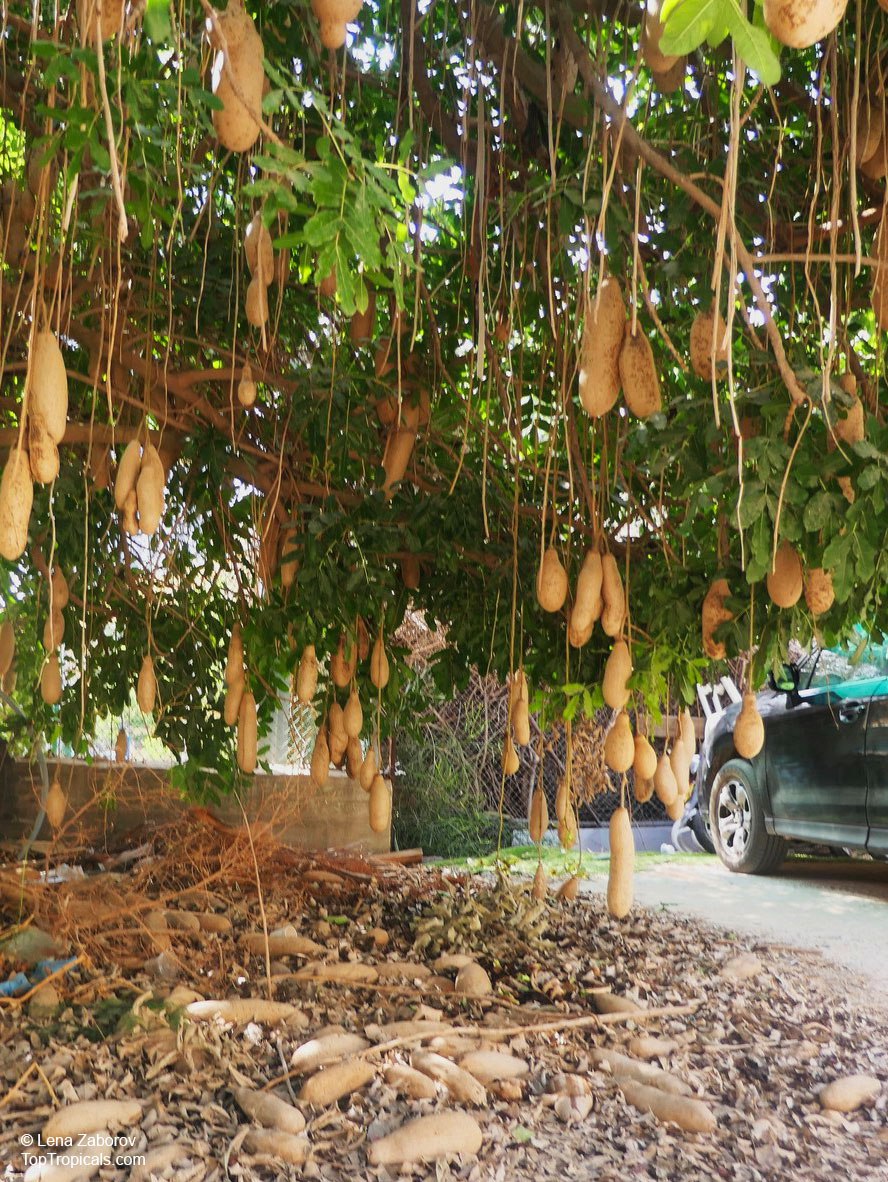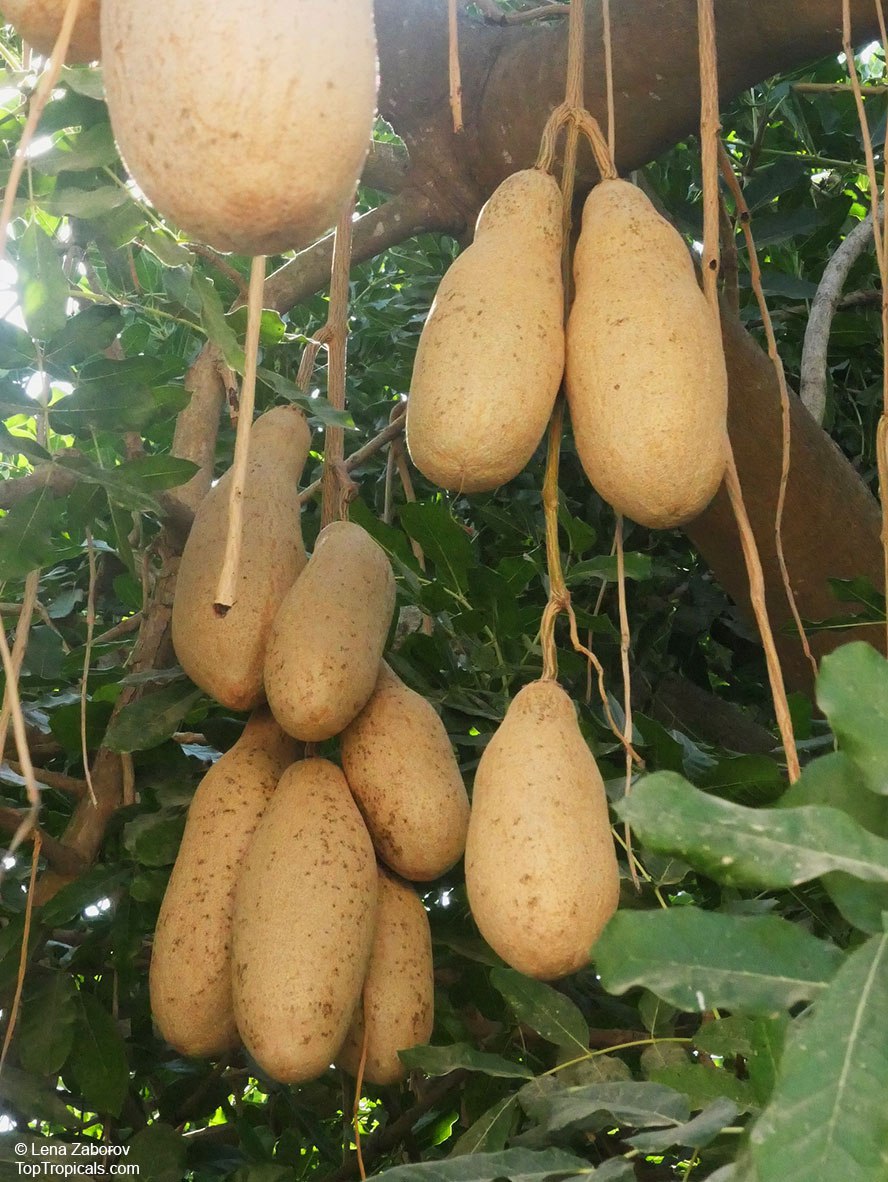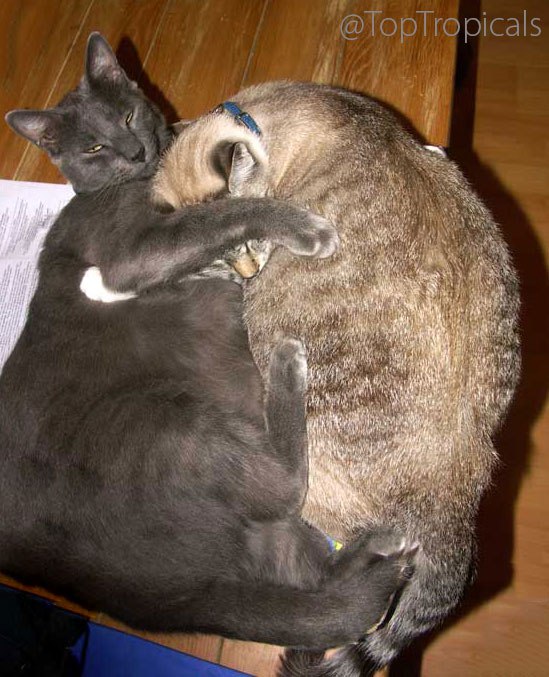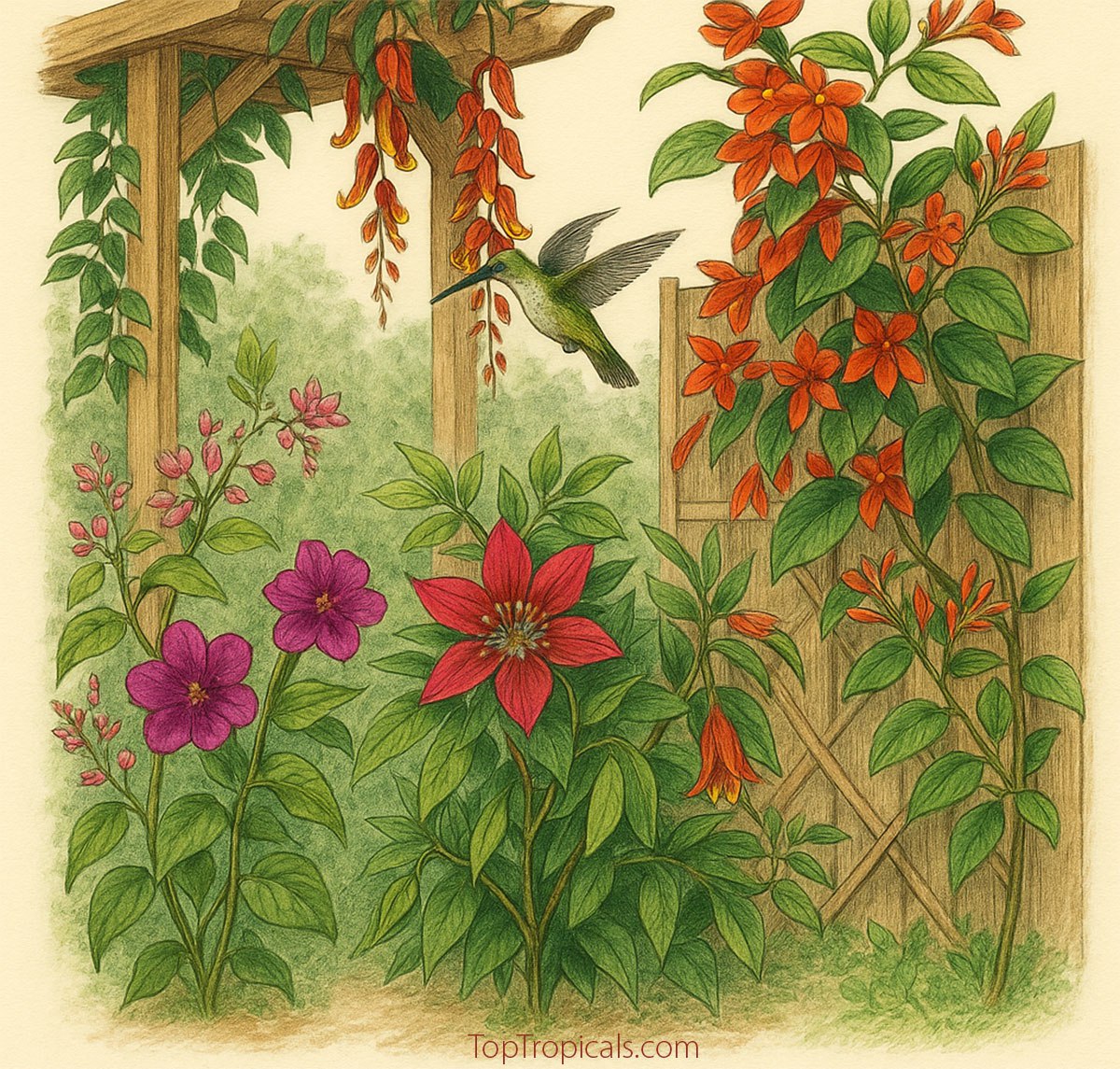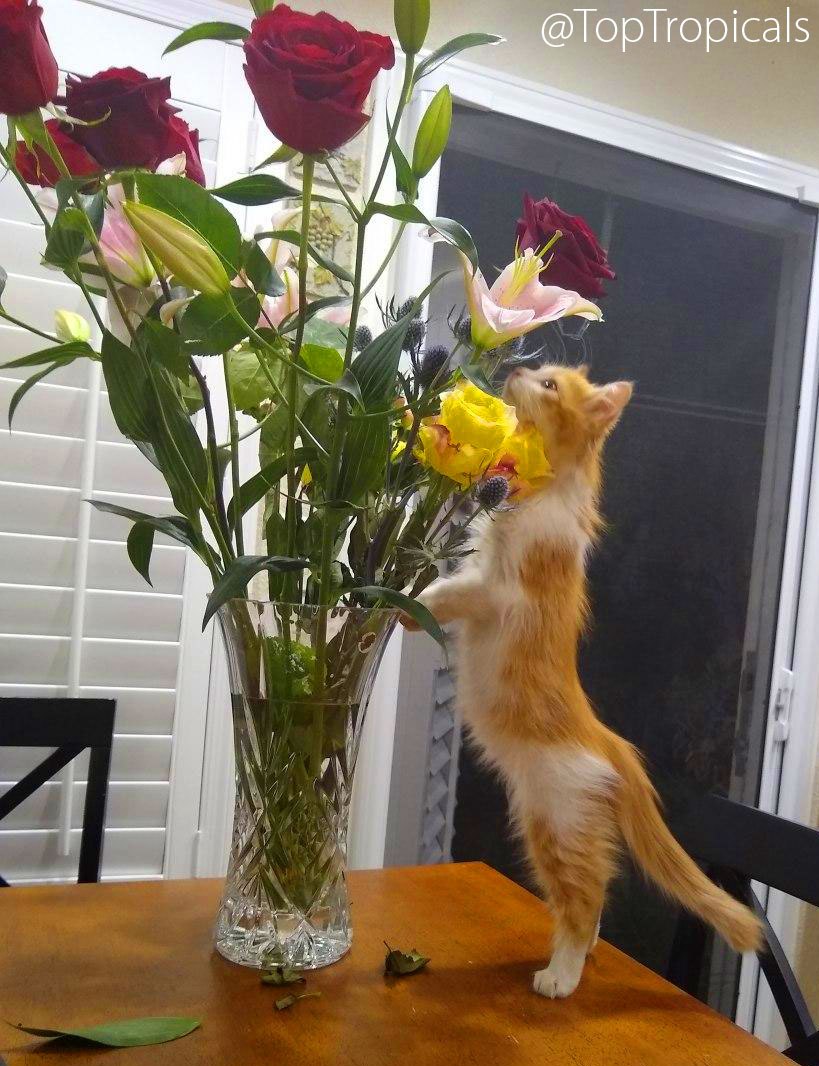Garden Blog - Top Tropicals
Is the Sausage Tree from Africa edible?
Despite the tempting name, the sausages that grow on the Sausage Tree don't actually taste like the sausages you're thinking of, but... in a nutshell, they are still edible! Let's dive into the details...
🌭The Sausage Tree (Kigelia pinnata, also known as Kigelia africana) is a striking tropical tree native to sub-Saharan Africa, renowned for its large, sausage-shaped fruits that can grow up to 2 feet long and weigh up to 15 pounds.
🌭While the Sausage Tree's fruit is technically edible, it is toxic when raw. To safely consume the fruit, it must undergo specific processing methods:
🌭Even with these preparations, caution is advised. It's essential to consult with local experts or traditional practitioners before attempting to consume Sausage Tree fruit.
🌭Various parts of the tree, including the fruit, bark, and leaves, have been used to treat ailments such as ulcers, skin infections.
🌭In some African cultures, the fruit is associated with fertility and is used in rituals. The tree's presence is often considered auspicious.
🌭Although the Sausage Tree might not be winning any awards for your dinner table, it's definitely a showstopper in the yard. Think of it as the ultimate conversation starter and the weirdest, most fascinating collectible you'll ever grow!
Drying: The fruit is dried thoroughly to reduce toxicity.
Roasting or Baking: These methods help neutralize harmful compounds.
Fermentation: In some cultures, the fruit is fermented, often with sugarcane juice or honey, to create traditional beverages like muratina in Kenya.
🛒 Grab your Sausage Tree now - impress your guests!
📚 Learn more about Sausage Tree:
Meet the tree everyone's talking about: sausages growing on a tree!
#Nature_Wonders #Trees #Discover
🏵 TopTropicals
Is the Sausage Tree from Africa edible?

Sausage Tree - Kigelia pinnata, fruit
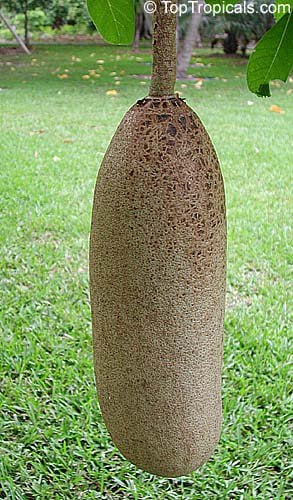
Sausage Tree - Kigelia pinnata, fruit
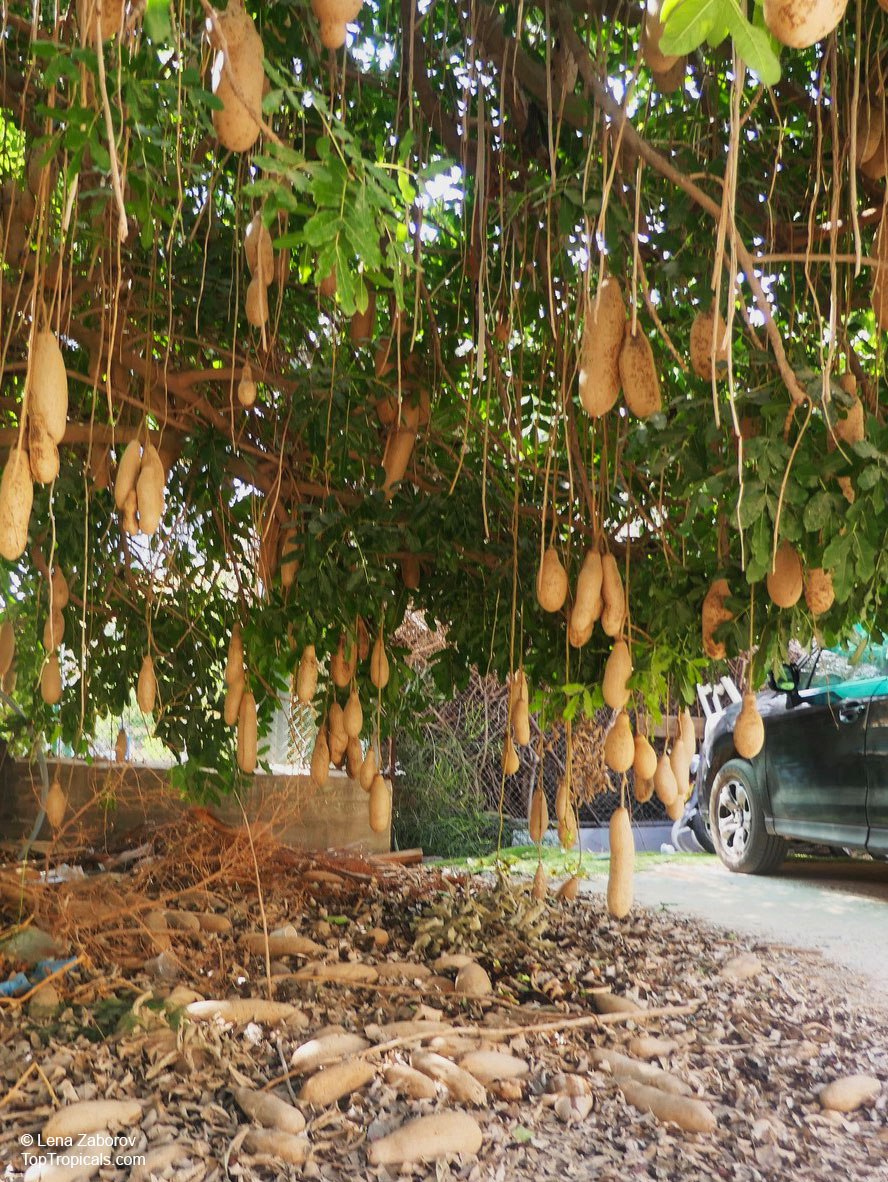
Sausage Tree - Kigelia pinnata

Sausage Tree - Kigelia pinnata, fruit
Despite the tempting name, the sausages that grow on the Sausage Tree don't actually taste like the sausages you're thinking of, but... in a nutshell, they are still edible! Let's dive into the details...
- 🌭The Sausage Tree (Kigelia pinnata, also known as Kigelia africana) is a striking tropical tree native to sub-Saharan Africa, renowned for its large, sausage-shaped fruits that can grow up to 2 feet long and weigh up to 15 pounds.
- 🌭While the Sausage Tree's fruit is technically edible, it is toxic when raw. To safely consume the fruit, it must undergo specific processing methods:
- 🌭Even with these preparations, caution is advised. It's essential to consult with local experts or traditional practitioners before attempting to consume Sausage Tree fruit.
- 🌭Various parts of the tree, including the fruit, bark, and leaves, have been used to treat ailments such as ulcers, skin infections.
- 🌭In some African cultures, the fruit is associated with fertility and is used in rituals. The tree's presence is often considered auspicious.
- 🌭Although the Sausage Tree might not be winning any awards for your dinner table, it's definitely a showstopper in the yard. Think of it as the ultimate conversation starter and the weirdest, most fascinating collectible you'll ever grow!
Drying: The fruit is dried thoroughly to reduce toxicity.
Roasting or Baking: These methods help neutralize harmful compounds.
Fermentation: In some cultures, the fruit is fermented, often with sugarcane juice or honey, to create traditional beverages like muratina in Kenya.
🛒 Grab your Sausage Tree now - impress your guests!
📚 Learn more about Sausage Tree:
Meet the tree everyone's talking about: sausages growing on a tree!
#Nature_Wonders #Trees #Discover
🏵 TopTropicals
How to get a large, lush and fragrant bush in no time
Clerodendrum bungei - Glory Bower, Cashmere bouquet
- 💐 Looking for a fragrant, fast-growing shrub that adds beauty and privacy to your garden? Clerodendrum bungei - Glory Bower, Cashmere bouquet - is an excellent choice.
- 💐 Fragrant Blooms: Enjoy clusters of sweetly scented, pink flowers that attract butterflies and other pollinators. They open in terminal panicles up to six inches across.
- 💐 Versatile Growth: Dark green leaves often tinged purple are up to 8 inches long. This plant can be grown as a compact shrub or allowed to spread. This plant is incredibly vigorous and fast-growing, spreading quickly through root suckers. If you don’t want it to take over your yard in just one season, make sure to plant it in a contained corner or a container.
- 💐 Hardy and Resilient: Cashmere Bouquet is hardy to USDA Zones 8-10 and can tolerate light freezes, rejuvenating each spring.
- 💐 Low Maintenance: It thrives in full sun to part shade and is drought-tolerant once established. Keep the soil moist during the growing season. Regular pruning helps maintain its shape and encourages more blooms.
Key Benefits:
🛒 Buy Clerodendrum bungei – Cashmere Bouquet
📚 More about Clerodendrums in previous posts:
- 💋 Clerodendrum schmitii and Clerodendrum wallichii
- 💋 Clerodendrum minahasse - Fountain Clerodendrum
- 💋What is the most spectacular Clerodendrum
- 💋How to grow Clerodendrums
- 💋Fireworks of Winter
- 💋Fragrant Cashmere Bouquet
- 💋Fountain Clerodendrum
- 💋What is better - Blue or Pink
- 💋Why is it called Blue Butterfly
- 💋Clerodendrum paniculatum
- 💋Seaside Clerodendrum
- 💋Pink Bleeding Heart
- 💋Why is it called Musical Notes
- 💋Bleeding Heart Vine
- 💋Cashmere Bouquet
#Hedges_with_benefits #Perfume_Plants #Container_Garden #Butterfly_Plants
🔴 Join 👉 TopTropicals
Go for the great
"Don't be afraid to give up the good to go for the great." - John D. Rockefeller
🐈 PeopleCats.Garden
#PeopleCats #Quotes
🔴 Join 👉 TopTropicals
Top irresistible vines for a hummingbird haven
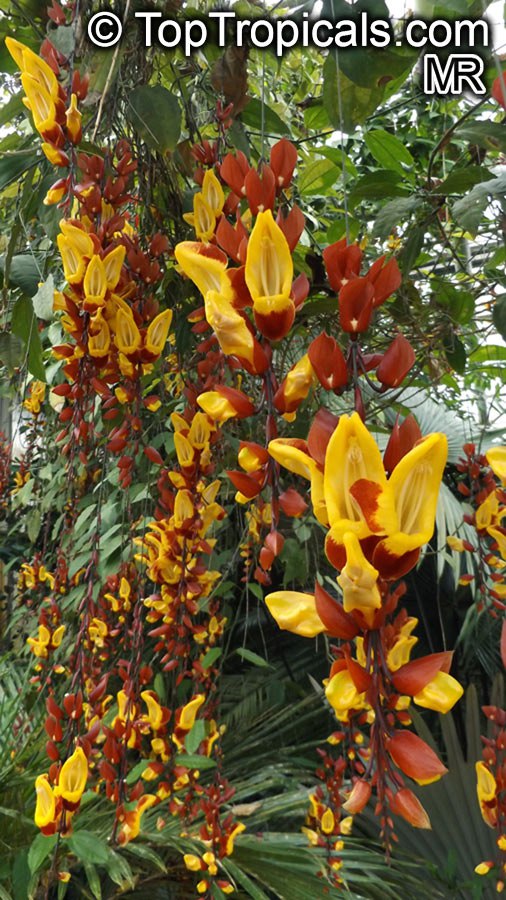
Thunbergia mysorensis - Clock Vine
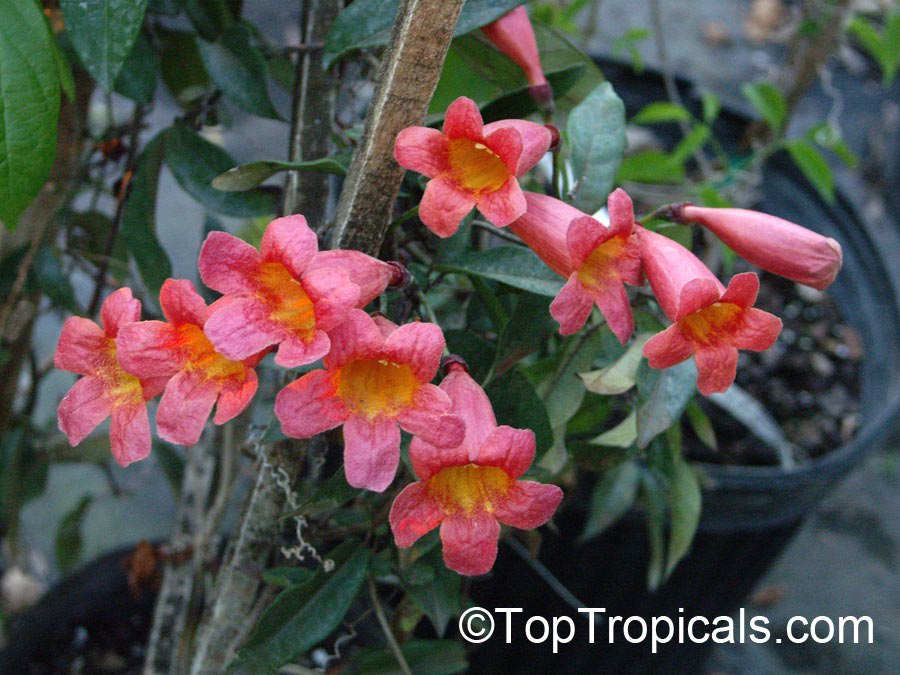
Bignonia capreolata - Crossvine

Tecomaria capensis - Cape Honeysuckle

Passiflora coccinea - Passion Flower
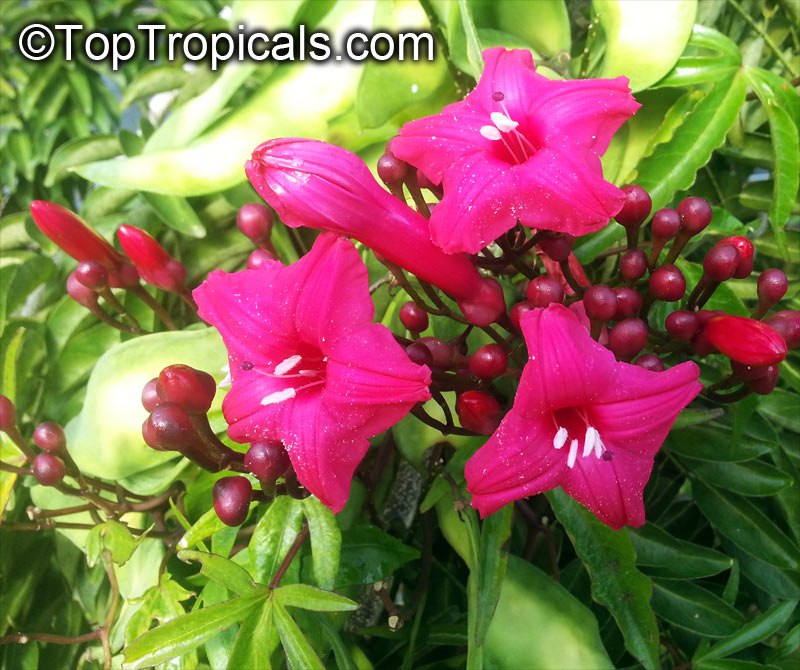
Ipomoea - Prince Kuhio Vine

Lonicera japonica - Japanese Honeysuckle
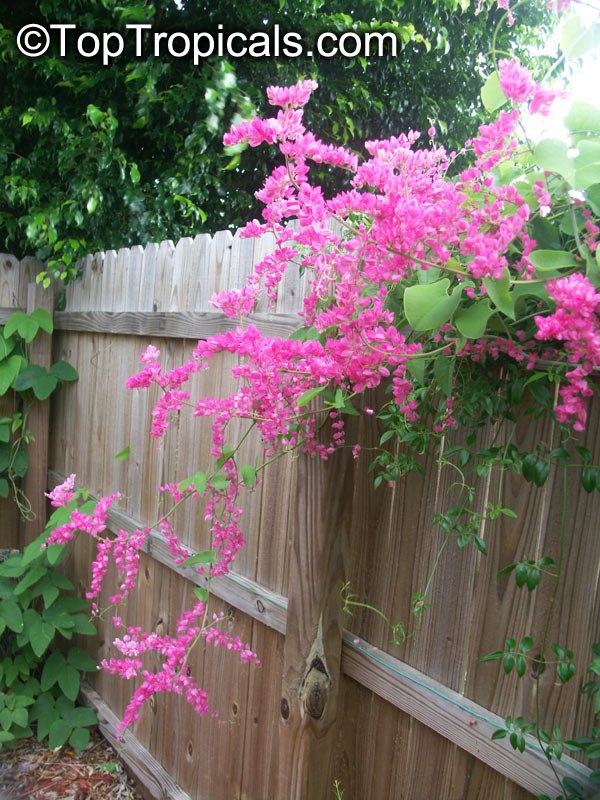
Antigonon leptopus - Mexican Coral Vine
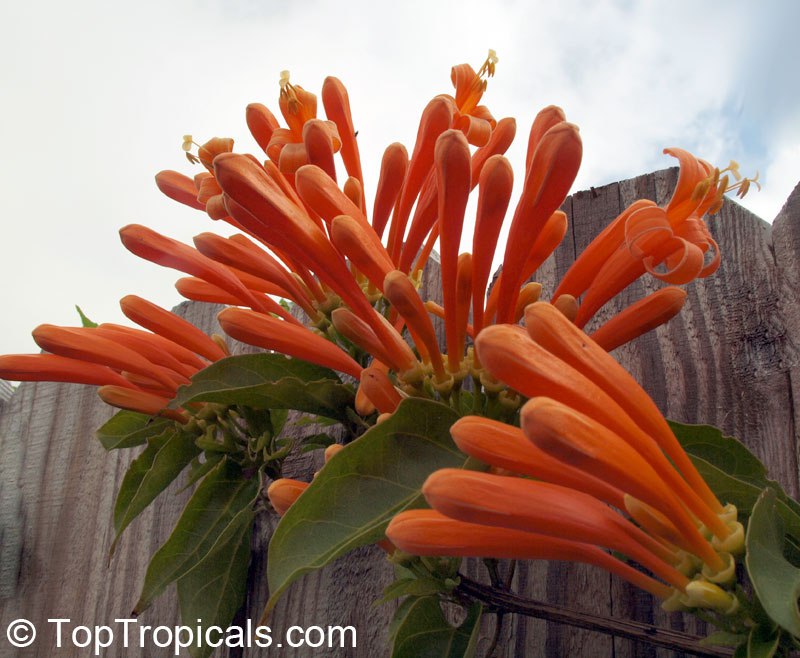
Pyrostegia venusta - Flame Vine
Full list of Hummingbird favorite vines for the previous post ⤴️
Antigonon leptopus - Mexican Coral Vine 📸
Aristolochia - Dutchman's Pipe
Bignonia capreolata - Crossvine 📸
Camptosema - Dwarf Red Jade Vine
Chonemorpha fragrans - Frangipani Vine
Clerodendrums - Bleeding Heart and others
Clitoria ternatea - Butterfly Pea
Combretum aubletii - Monkey Brush Vine
Dipladenia (Mandevilla)
Faradaya splendida - Glory Vine
Gmelina philippensis - Parrot's Beak
Hiptage benghalensis - Helicopter Flower
Ipomoea - Prince Kuhio Vine 📸
Lonicera - Honeysuckle 📸
Mansoa alliacea - Garlic Vine
Pandorea jasminoides - Pandora Vine
Passiflora - Passion Flower 📸
Petrea volubilis - Queen's Wreath
Pyrostegia venusta - Flame Vine 📸
Quisqualis indica - Rangoon Creeper
Senecio confusus - Mexican Flame Vine
Solandra - Butter Cup
Stephanotis floribunda - Bridal Bouquet
Tecomanthe dendrophylla - New Guinea Creeper vine
Tecomaria capensis - Cape Honeysuckle 📸
Thunbergia - Sky Vine, Clock Vine 📸
Turn Your Garden Into a Hummingbird Paradise!
#Hedges_with_benefits #Butterfly_Plants #How_to
🔴 Join 👉 TopTropicals


